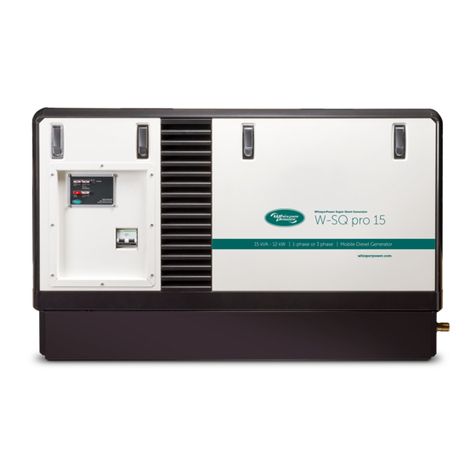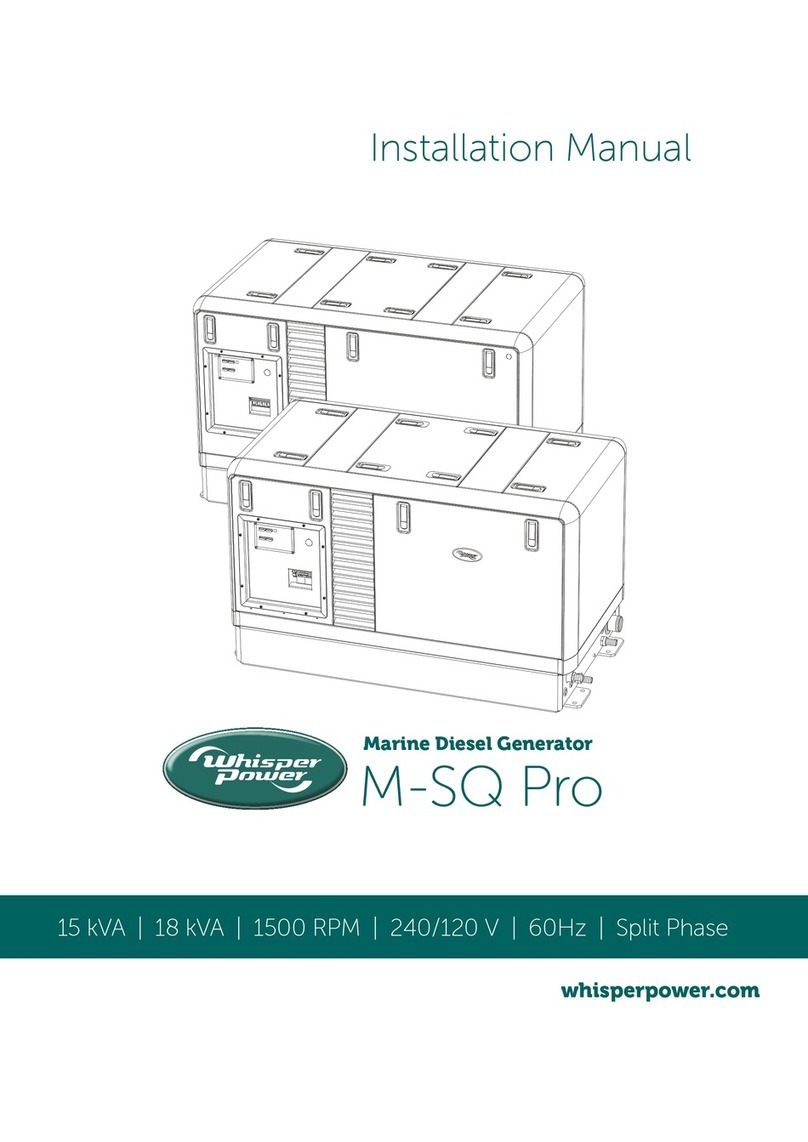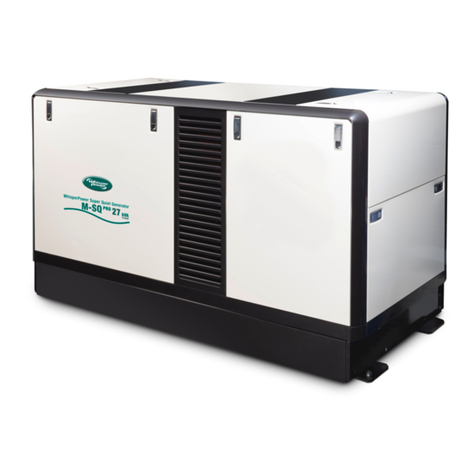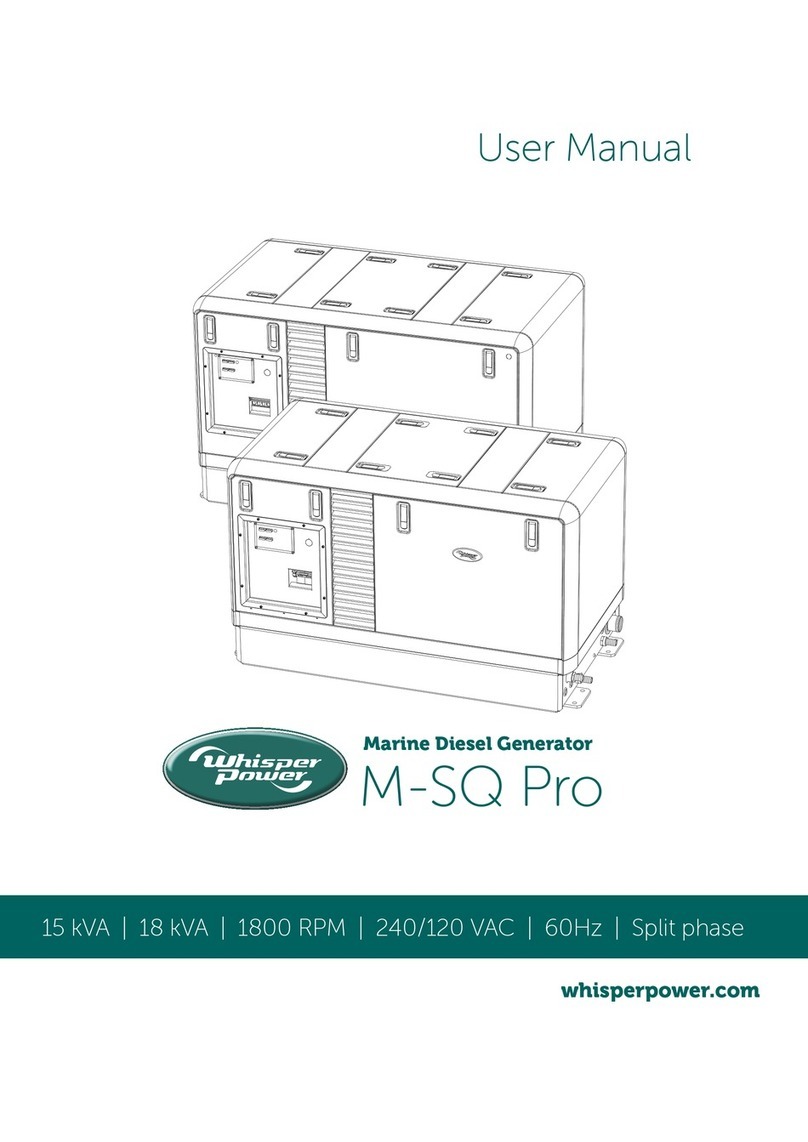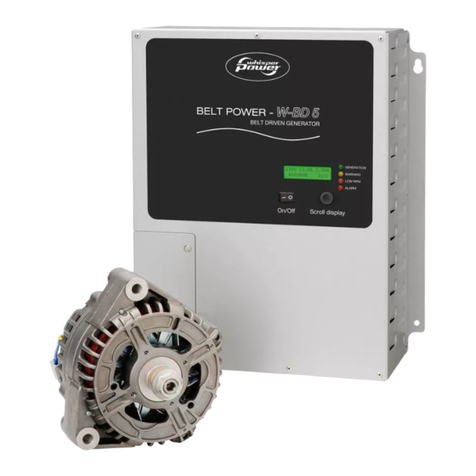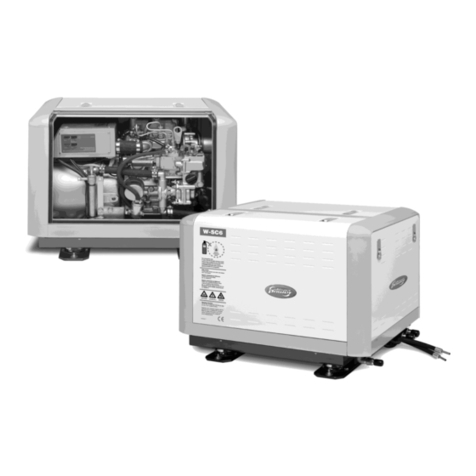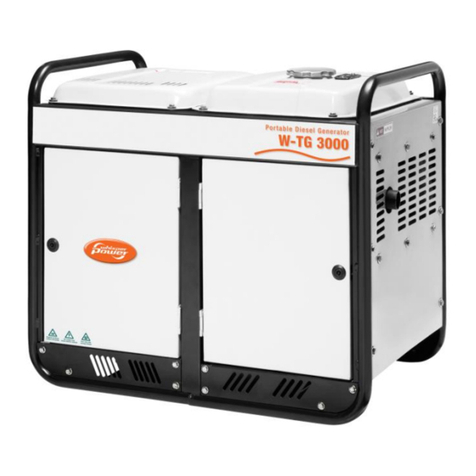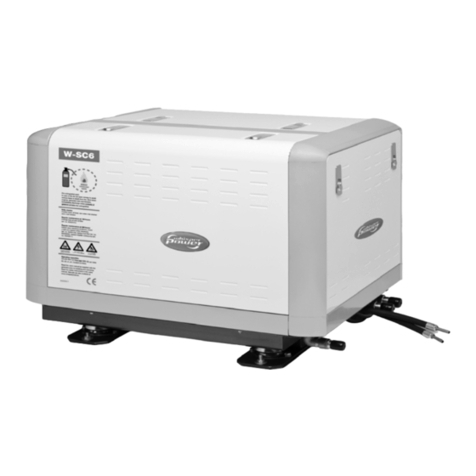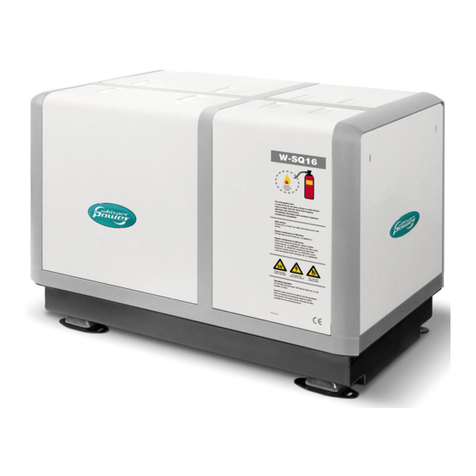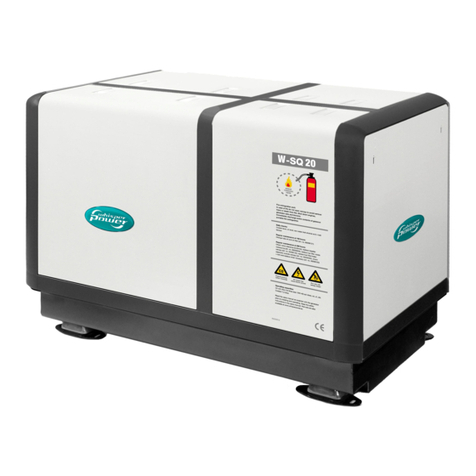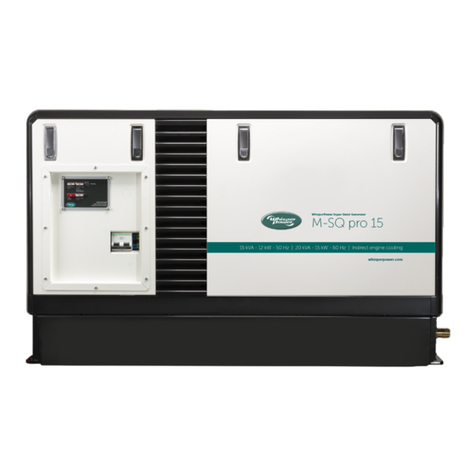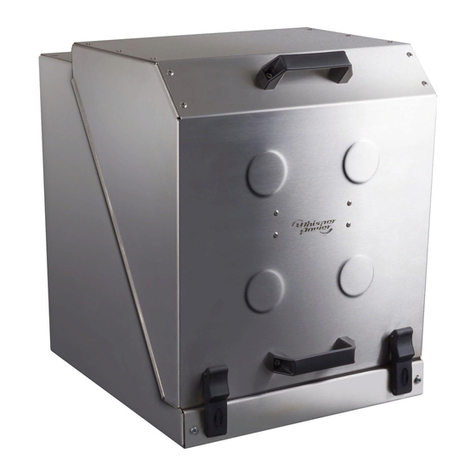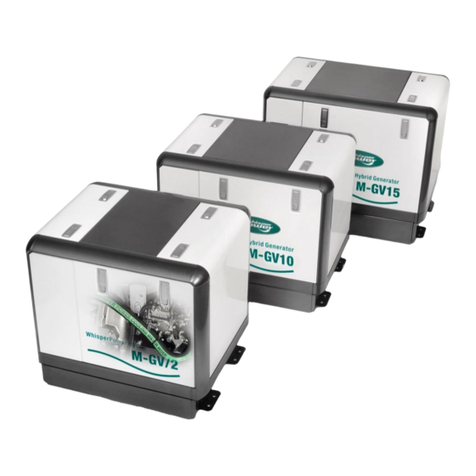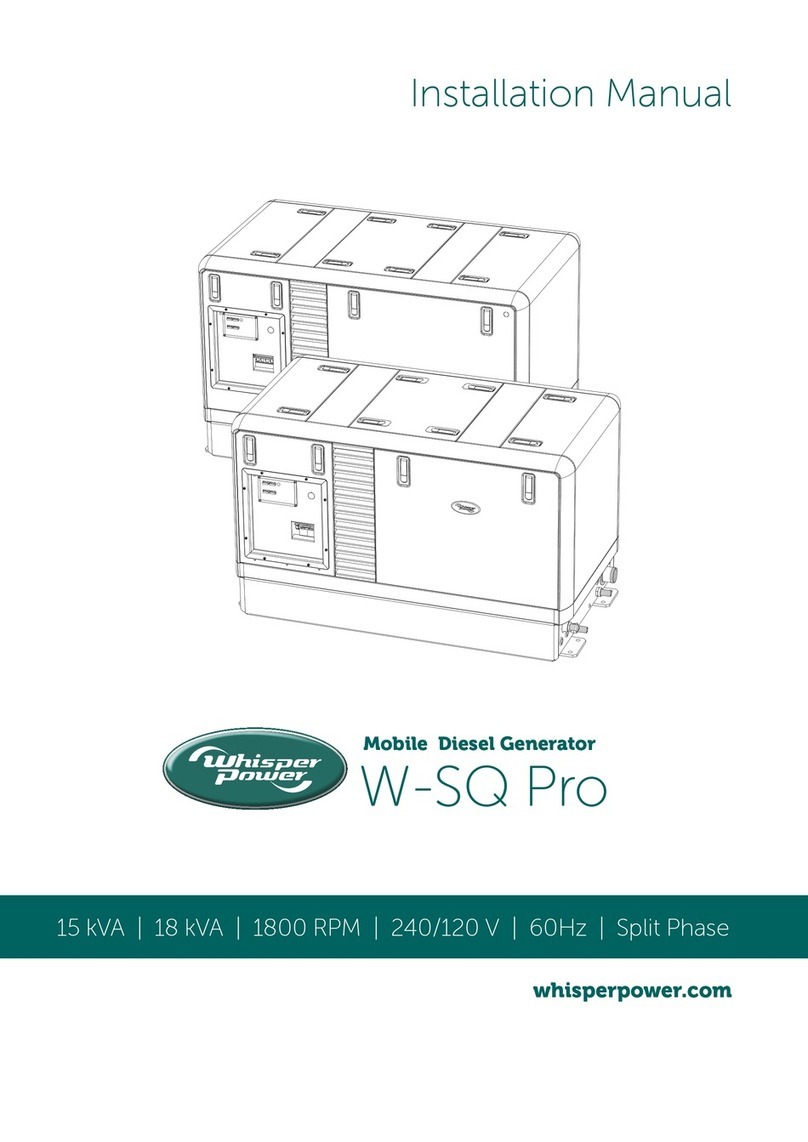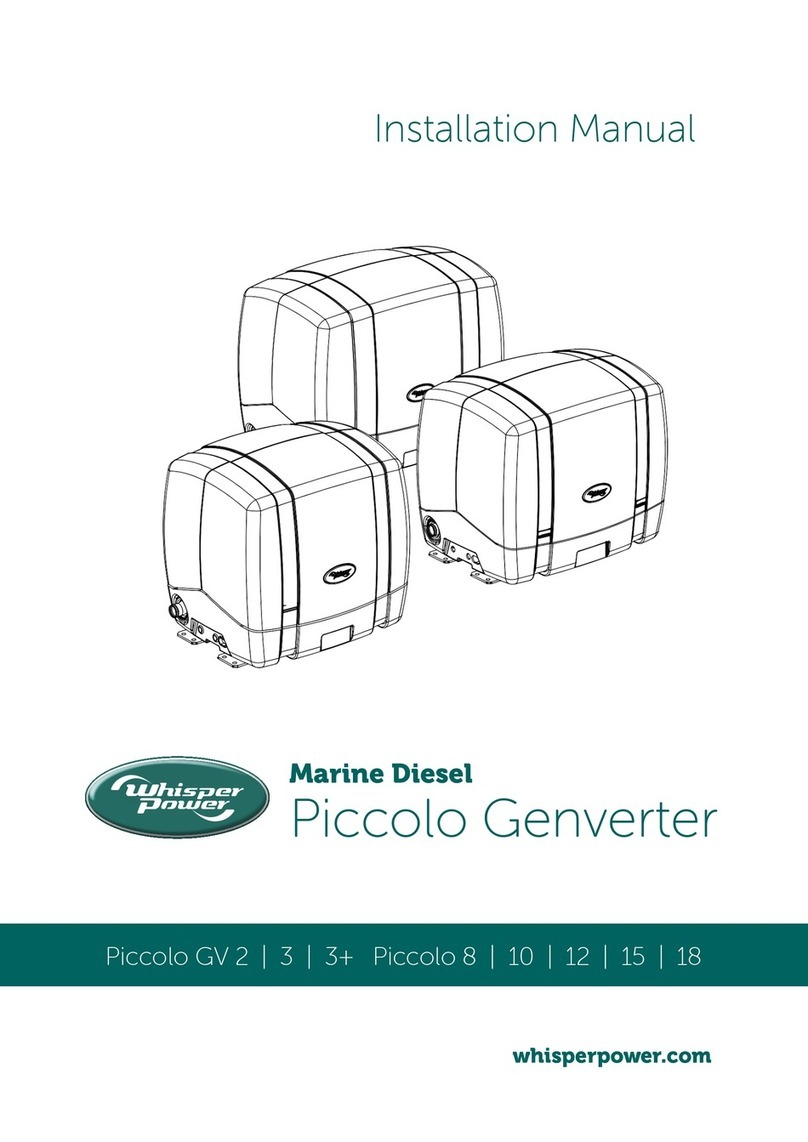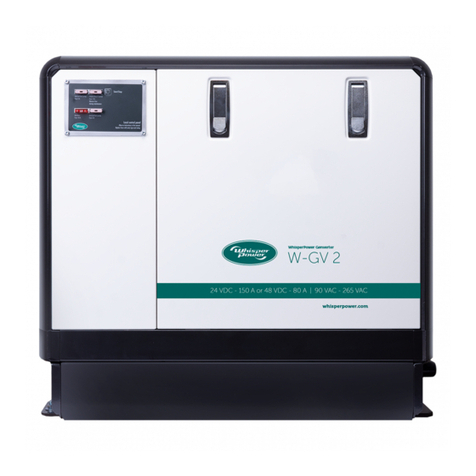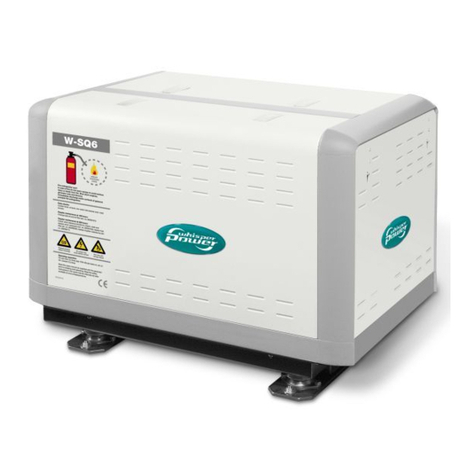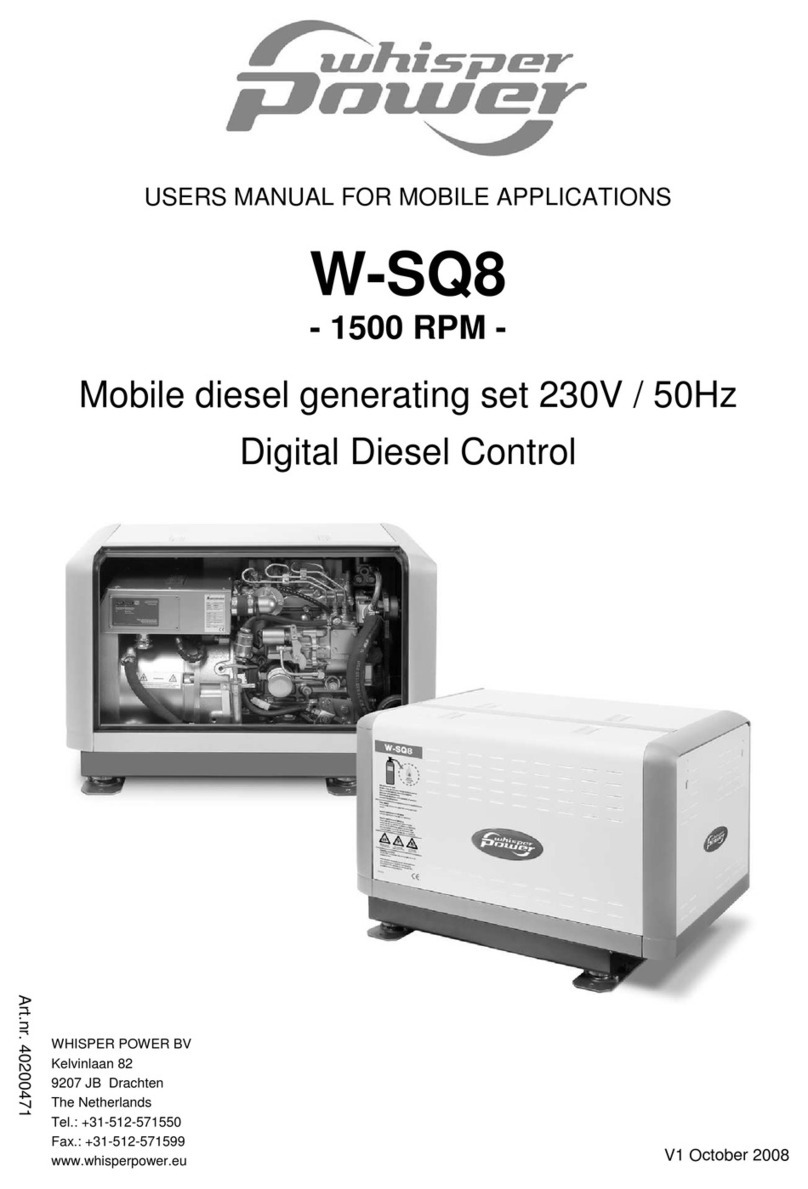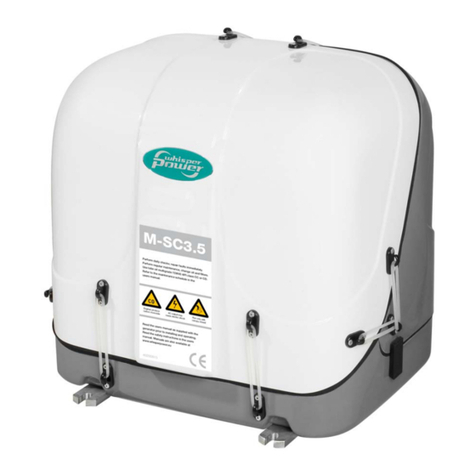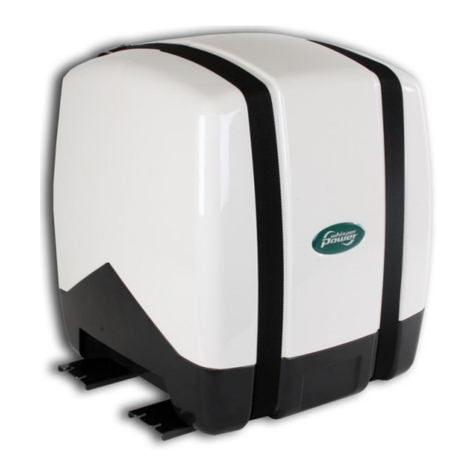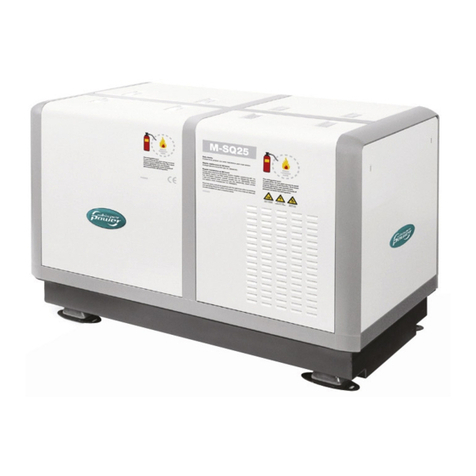
INFORMATION
8
November 2011/ W-BD3.5/W-BD5 BeltPower / EN
2.1.5 Operation
When the on/off switch is in the on-position when the
vehicle (boat) engine starts the inverter will immediately
generate 230V to the outlet. Ensure that all appliances not
intended to use are switched off or disconnected
Close to the generator will be moving parts like fans and
V-belts and hot engine parts.
Take note of the signs on the Belt Power parts
which show symbols in a triangle indicating
danger.
•The Belt Power should be operated by authorised
personnel only.
•Be aware of hot parts engine parts and especially
parts of the exhaust system and the cooling system.
•If the Belt Power is unsafe, fit danger notices and
disconnect the battery positive (+) lead of the engine
so that it cannot be started until the condition is
corrected.
•Do not attempt to operate the Belt Power with a
known unsafe condition.
•Always consult the manual before carrying out
maintenance.
•Do not change the settings without consulting the
manufacturer. Keep a record of setting changes in this
manual.
2.1.6 Fire and explosion
Engine fuels can be flammable. Proper
handling limits the risk of fire and explosion.
•Avoid refilling the fuel tank while the engine is
running. When oil or fuel is leaking do not use the Belt
Power.
•Do not run the engine close to explosives or gasses.
•Hydrogen gas generated by charging batteries is
explosive. Ensure for proper ventilation. Do not smoke
or allow sparks, flames, or other sources of ignition
around batteries.
•Keep a fire extinguisher on hand.
2.1.7 Chemicals
•Fuels, oils, coolants, and battery electrolyte can be
hazardous to personnel if not treated properly. Do not
swallow or have skin contact with these liquids. Do
not wear clothing that has been contaminated by fuel
or lubricating oil.
2.2 STORAGE
•After transporting the Belt Power check for damage
before installation.
•Long term storage can have detrimental effects on the
generator and inverter.
•The generator windings and some electronic
components in the inverter tend to condense. To
minimise condensation, store the generator and
inverter in a dry and warm storage area.
2.3 FEATURES BELTPOWER
2.3.1 How does it work?
A special designed generator (generator) has to be
mounted on an available engine such as the main
automotive engine or propulsion engine in a boat. The
generator is driven by V-belt/pulley transmission.
The generator generates a high voltage between 200 Volt
and 340 Volt (on a very high frequency) that is converted
by a special designed inverter to a 230 Volt 50 Hz sine
wave output, independently of the rpm of the engine, with
a very high efficiency of about 94%.
There are two benefits that makes this system superior to
systems that work on low DC voltage (12V or 24V). First
high voltage means low currents and little resistant losses
and thinner cables. Secondly the inverter does not need to
transform a low battery voltage up to 230 Volt which
saves a transformer or step up module. All together the
efficiency is much higher and the installation much easier
Because of the small dimensions the Belt Power will fit
where a diesel driven generator is too big and heavy. The
most common applications are service vans, ambulances,
fire fighting vehicles and small pleasure crafts.
The inverter will often be placed in a separate
compartment where it is more protected against dirt and
humidity.
The generator speed depends on the ratio of the pulleys
and the engine speed. The pulley/belt transmission system
should be calculated and designed to keep the generator
in the RPM area where it can perform optimally. Refer to
the installation manual for more details. When necessary
one can extend the installation with an manual- or
automatic system to adapt the speed to the load applied.
Refer to the installation manual for more details.
All cables and hoses are guided through the inverter
housing and connected on a terminal board inside.
Installation accessories are listed in the installation manual
and are available through the supplier of the Belt Power.
The Digital Control system of the Belt Power is based on
microprocessor technology. The system can be controlled
and monitored from the display on the inverter casing and
